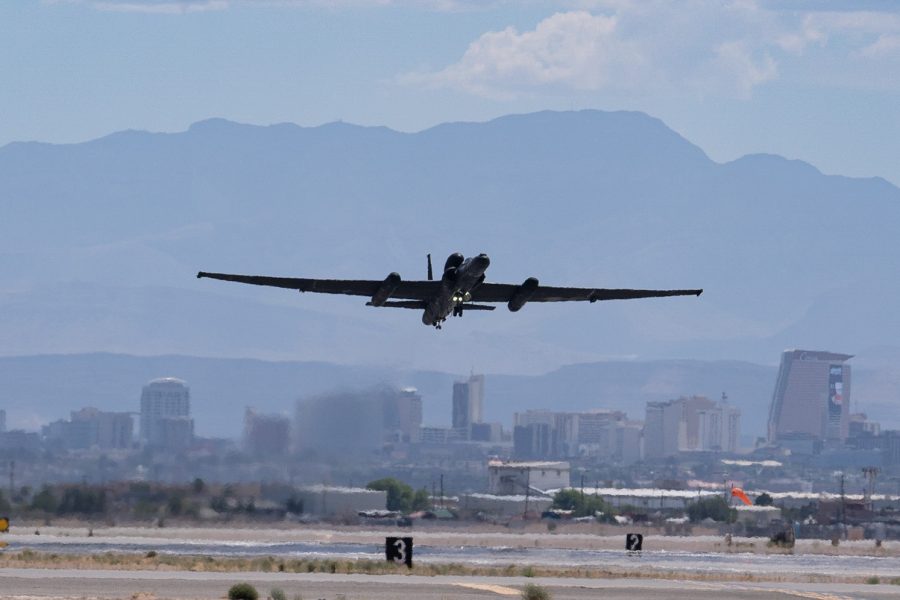DAYTON, Ohio—The Air Force plans to retire its U-2 Dragon Lady fleet in fiscal 2026—but until then, officials say they’re hard at work to keep the iconic high-altitude surveillance planes flying and testing out technology that may be used on future aircraft.
The plan to divest the U-2 was first reported by Aviation Week and Air Force Times, citing a line tucked into Air Force budget documents that “expectations are for protective NDAA language to be waived … allowing the USAF to move forward with U-2 divestment in FY 2026.”
Col. William Collins, senior materiel leader for high-altitude intelligence, surveillance, and reconnaissance, confirmed the plan to reporters at the Life Cycle Industry Days conference on Aug. 1—the first official Air Force comment on the future of the U-2 since the plan emerged.
“Our focus right now is working with [Air Combat Command] to maintain full viability of the plane through the service life, maintaining as much trade space for senior leaders,” Collins told Air & Space Forces Magazine. “We are working toward the Air Force’s position to the best of our ability. But what we’re doing predominantly is focusing on how we ensure that we don’t create a scenario in which we’re not able to meet mission need because of things like obsolescence.”
While the orginial U-2 first flew in 1955, the current aircraft date back to the 1980s, with the final one delivered in 1989. That was followed by an upgrade in the early 1990s. But the fleet’s average age is now nearly 40 years old, and the Air Force faces diminishing manufacturing sources for key parts, Collins said.
Still, the U-2 remains unique in the Air Force inventory as the service’s only manned high-altitude ISR platform. An icon of the Cold War era, the Dragon Lady returned to headlines earlier this year when one flew over the Chinese surveillance balloon transiting the continental U.S. The Pentagon subsequently released an image from the U-2 cockpit showing the balloon.
With the ability to fly at altitudes in excess of 70,000 feet, demand from combatant commanders continues, Collins said, so the Air Force wants to keep the fleet in flying shape into 2026. USAF asked for $16.8 million in research and development, $54.7 million in procurement, and $17 million in operations and maintenance to the U-2 in fiscal 2024.
The aircraft’s uses also aren’t limited solely to ISR, said Col. Joshua Williams, program executive officer for ISR and special operations forces.
“We’re using U-2 in unique and innovative ways and as a surrogate platform, decreasing risk for our fifth-gen fighters,” said Williams. “All we’re doing is decreasing risk and increasing the technical mature for stuff we’ll use on the F-35, F-22.
According to budget documents, that “stuff” includes sensors and capabilities related to the Air Force’s Advanced Battle Management System and the Pentagon’s broader Joint All-Domain Command and Control effort.
“What we’re focused on is a code-compliant processor capability that provides open mission systems, so that we can bear out that ability to be leveraged on fifth-gen, sixth-gen platforms,” Collins said. “We’re also looking at demoing some [signals intelligence] capability that can also be potentially used on future platforms.”
In addition to buying down risk and freeing up fighters like the F-35 and F-22, using the U-2 as a surrogate has another benefit.
“We’re focusing on showing that as we develop future capability, not only are we doing the survivability, but also the ability to plug and play sensors, not being platform-specific, but platform agnostic,” Collins said.
Particularly for ABMS, Air Force leaders have stressed the importance of sensors being able to fit into a broader architecture.
But while the U-2 may benefit sixth-generation platforms and ABMS by testing out future tech, the Air Force’s plans for its main mission of high-altitude ISR are changing fundamentally, as well. The service’s other high-altitude ISR platform, the RQ-4 Global Hawk drone, is slated to be retired in 2027, a year after the sunset of the U-2 fleet.
“There’s going to be a lot more space involved,” Williams said. “Especially in the contested environments the U-2 and these platforms fly in, it’s a different problem and a different answer.”
